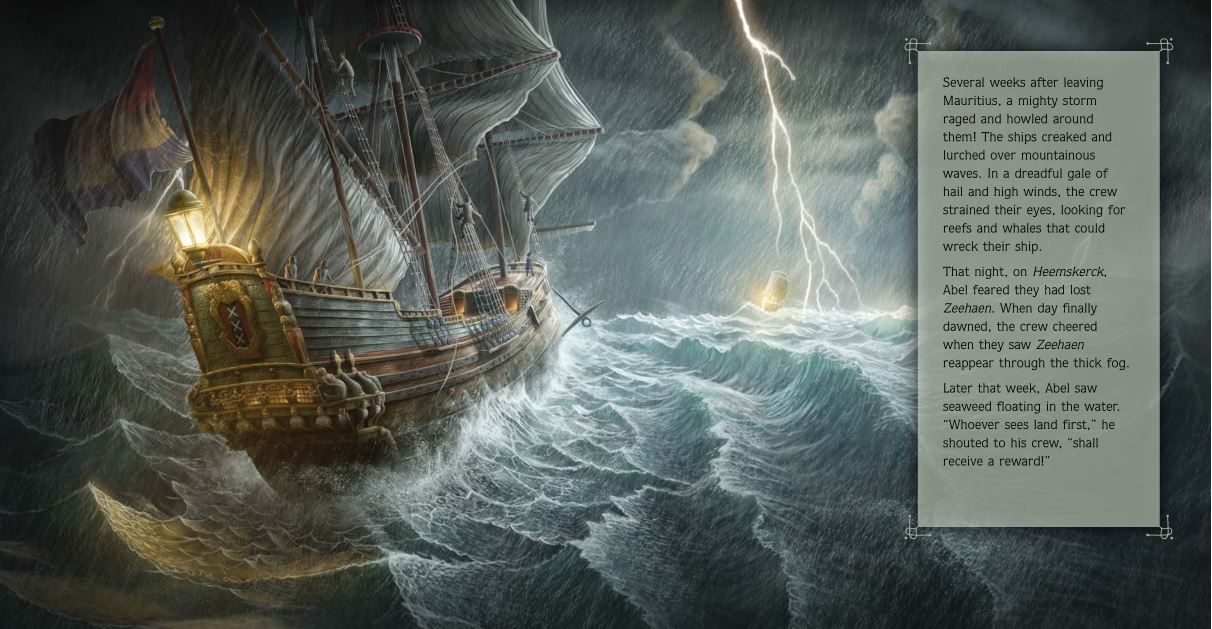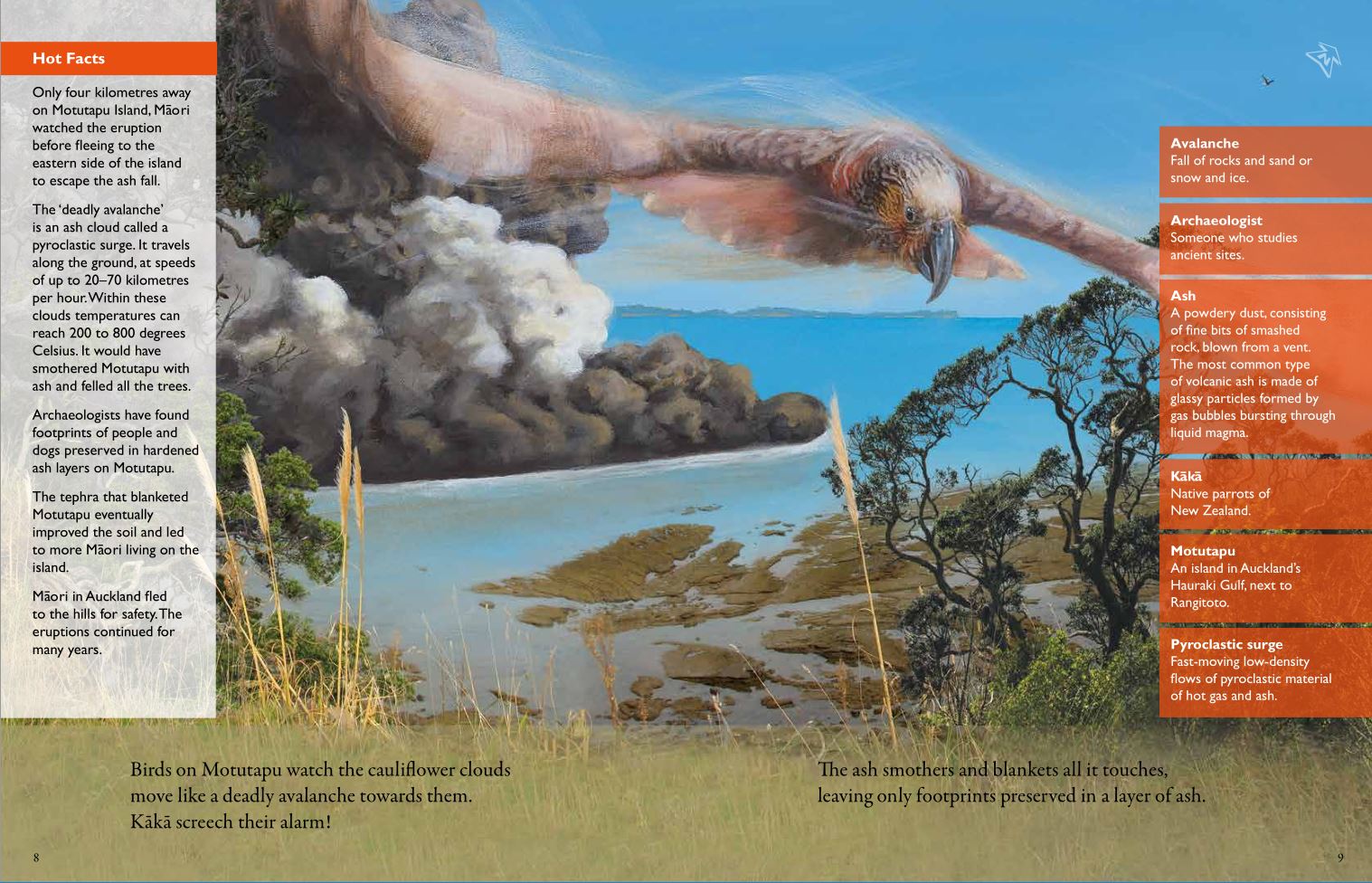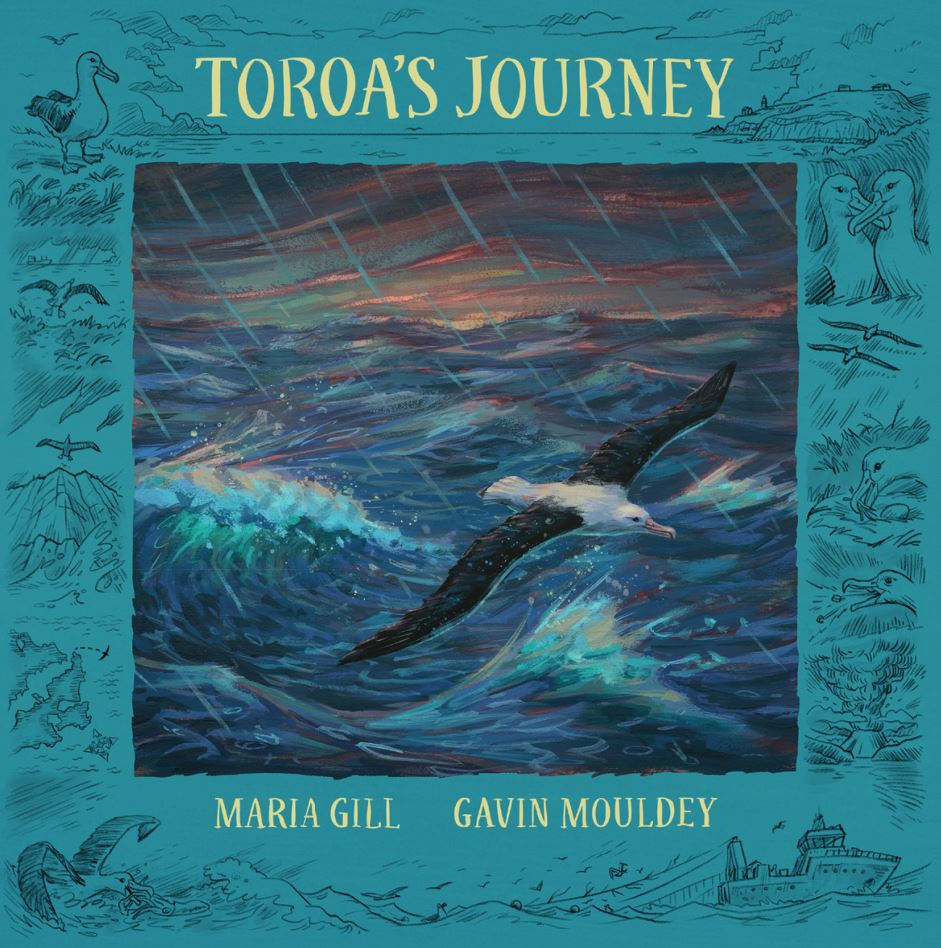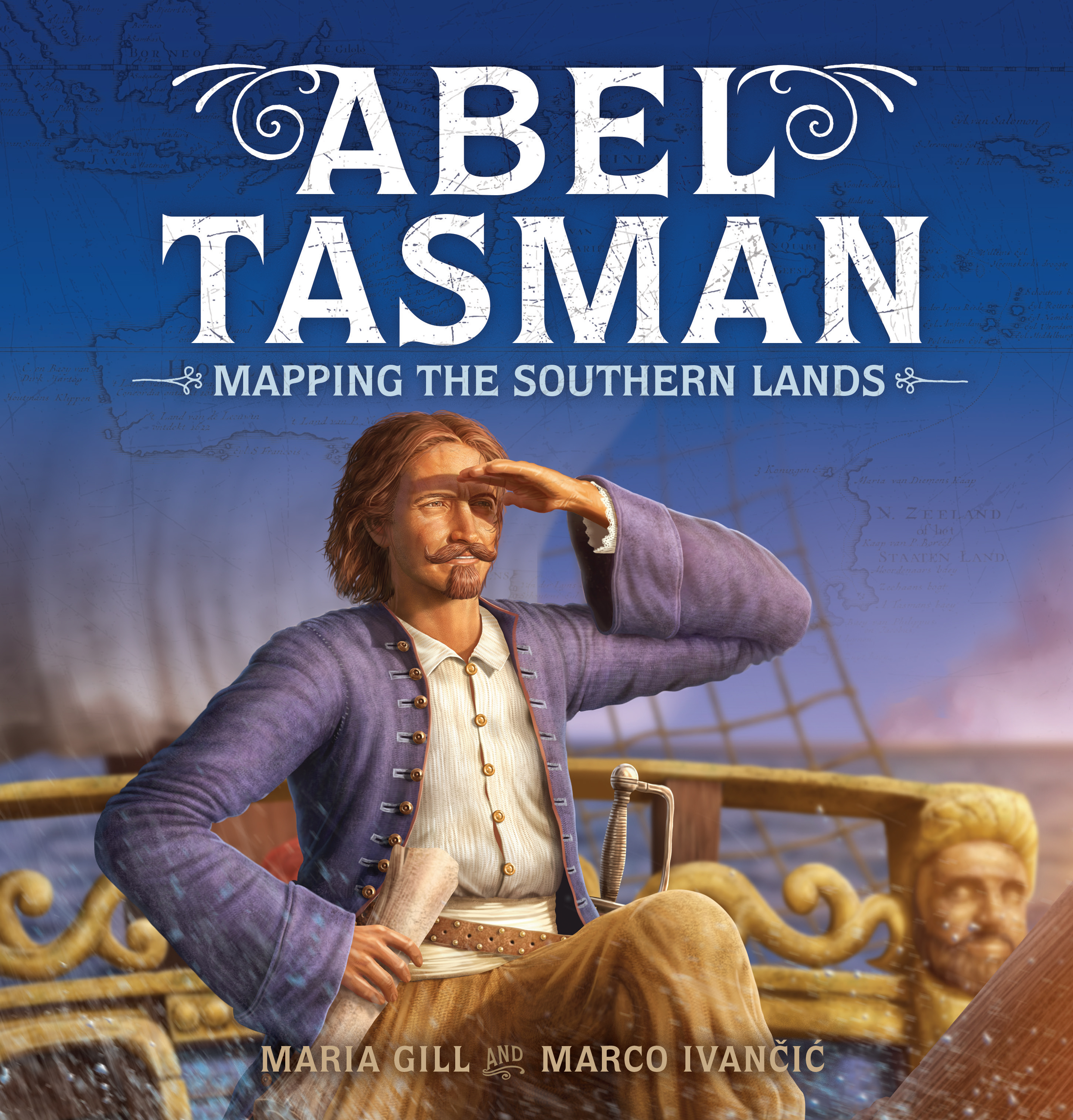Non-fiction writer Maria Gill ponders the nature of a creative non-fiction story for children and how creative non-fiction stories are categorised. Toroa’s Journey, by Maria Gill and Gavin Mouldey, is released this week by Potton & Burton. Abel Tasman: Mapping the Southern Lands, is released on 1 November by Scholastic NZ.

I fell in love with creative non-fiction books the day I picked up Australian author/illustrator Narelle Oliver’s book Home in 2006. She wrote and illustrated many books in this genre, but sadly passed away this year from cancer. When I read the true story of a peregrine falcon searching for a new place to live, eventually building a nest on a high-rise building, I was excited. Here was a way to tell true stories to young children that also gives them insight into nature.
I had been using all sort of devices in my own non-fiction writing such as activities, text boxes, jokes, graphics, and so on, to make the books interactive and interesting. But creative non-fiction tells a story that emotionally involves the reader, brings the child into the environment, and lets them see life from different perspectives … and this was what I realised I wanted to write.
…creative non-fiction tells a story that emotionally involves the reader, brings the child into the environment, and lets them see life from different perspectives…
Sandra Morris was one of the first to write and illustrate creative non-fiction picture books in New Zealand. In 2000, she wrote and illustrated Pohutukawa, a book about our iconic native tree. Pohutukawa verges on the edge of creative non-fiction because it is about the life of a pohutukawa tree, but she has woven a fictional character into the story to save the tree from possums, as a device to show children how they could save our native trees.
In my book Rangitoto (2009, 2014), a story about how Auckland’s youngest volcano evolved in the Hauraki Gulf, I used literary techniques to make the language come alive, and took the reader through the many stages of a volcanic eruption. It was beautifully illustrated by Heather Arnold. It was shortlisted alongside another creative non-fiction book E2 Call Home by Janet Hunt, which won the non-fiction category at the New Zealand Post Book Awards for Children & Young Adults. A godwit starts its mammoth migratory flight to the other side of the world but doesn’t return with the other godwits. Will it make it home? The book is non-fiction, but includes fiction writing techniques by emotionally involving the reader, using suspense, and including a story arc.

Recently, a creative non-fiction biography picture book series that started in Australia with Penguin Books was commissioned in New Zealand about famous Kiwis: First to the Top, Speed King and Sky High are written by David Hill and illustrated by Phoebe Morris. They feature stunning covers and reveal significant and thrilling events in these famous New Zealanders’ lives.
Evolution of creative non-fiction
Two types of creative non-fiction seem to be evolving. The first type involve stories following the life of an animal, person or inanimate object such as a volcano. Readers feel they are there with the subject and can experience what the subject is experiencing. For example, Gecko by Raymond Huber and Brian Lovelock (Walker Books, 2017), and The Cuckoo and the Warbler by Heather Hunt and Kennedy Warne (2016). Both books involve a story arc with a small amount of suspense: will the gecko get away from its predators, and will the warbler accept the cuckoo’s large egg?
Readers feel they are there with the subject and can experience what the subject is experiencing.
Children will come away knowing considerably more about those animals’ behaviours, what predates them, what they eat, and so on. They are written in a linear fashion and told in a way that entertains and informs the reader. They often have text boxes or paragraphs explaining something in the story on each double-page spread.
The other type of creative non-fiction book includes a classic story arc with several incidents leading to a climax near the end. Narrative hooks mean that the reader will want to read on to find out if the donkey in Roly the Anzac Donkey survives the Gallipoli war in World War I, or if Sir Edmund Hillary makes it up to the top of Mount Everest in First to the Top. The author might have made up dialogue to enhance the story. These books often have a factual page or timeline at the back of the book.
Which shelf?
Librarians, booksellers, publishers and competition organisers must categorise books to aid access for readers. How should they best categorise these creative non-fiction works which are basically hybrids and use both fictional and non-fictional techniques? Should they go into Picture Books, Sophisticated Picture Books, or Junior Non-Fiction? Publishers are also often unsure whether to enter creative non-fiction books in the non-fiction or picture book category in the New Zealand Book Awards for Children & Young Adults.
It is sometimes difficult to differentiate between fiction and creative non-fiction picture books. Confusion increases when even straight fictional stories are called creative non-fiction when they’re quite obviously make-believe stories. Reviewers often labelled my book The Last of Maui’s Dolphins (2014) creative non-fiction, but a dolphin couldn’t realistically play with squid or fish; they’re more likely to eat them. Nor would they try to save them from a fishing net. Sometimes factual books with text boxes have also been labelled creative non-fiction, but they’re not telling a story or using creative language.
The delightful thing about these creative non-fiction picture books is that they make non-fiction more attractive to girls and boys, and therefore aren’t just found in libraries and schools. Children want them in their home libraries to pore over the story, facts, and historically or anatomically correct illustrations.
Children want them in their home libraries to pore over the story, facts, and historically or anatomically correct illustrations.
But which bookshop shelf or library collection do they really belong to? Maybe it’s time to introduce another generally recognised genre: Creative Non-Fiction. After all, we did it a few years ago with Sophisticated Picture Books – can’t we do it again?

Toroa’s Journey
by Maria Gill and Gavin Mouldey
Published by Potton & Burton
RRP: $19.99 / HB $29.99

Abel Tasman: Mapping the Southern Land
by Maria Gill and Marco Ivancic
Published by Scholastic NZ
RRP: $27.99
Released 1 November
Editors’ note: The Reckoning is a regular column where children’s literature experts air their thoughts, views and grievances. They’re not necessarily the views of the editors or our readers. We would love to hear your response to any of The Reckonings – join in the discussion over on Facebook.

Maria Gill
Maria Gill has written 60 children’s books for the retail and education, local and international markets. Her book Anzac Heroeswon the Margaret Mahy 2016 Book of the Year prize. Many of her books have been shortlisted for national awards and been selected as Storylines Notable books. NZCYA shortlisted title from earlier this year, New Zealand Disasters: Our Response, resilience and recoveryillustrated by Marco Ivancic (Scholastic NZ) includes historical, contemporary, and recent disasters including the Covid-19 pandemic. This month saw her publish Remarkable animal stories from New Zealand and Australia, illustrated by Emma Huia Lovegrove (Scholastic NZ.)



